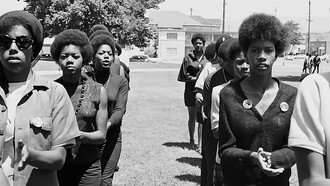Rarely does one come close to a unique study, but this is the case with Scented Vision (the Pennsylvania State University Press), edited by Christina Bradstreet (course and event planner at the National Gallery in London). An exciting and detailed excursus into the many facets represented by the sense of smell in the 19th century. Analysing styles and movements (also hinting at the centrality of the figure of d'Annunzio), the book is a succession of discoveries, which confirm the thesis that figurative arts and olfactory experience are, intrinsically, linked. The author reveals the genesis of this precious study in our interview.
It was intriguing to find, within the pages of her book, mention of a 'nose of the time'. What do you think were the main olfactory characteristics of the period you analysed?
By 'nose of the era', I mean the way the sense of smell was perceived in the popular consciousness at a certain time and place. The key idea is that of the sense of smell as an 'animal sense' and therefore, in Victorian thought, most felt by women, children, people of colour, the working classes and members of ethnic minorities and homosexuals (see the introduction for more details).
A second key idea is related to smell as a synonym for disease, an assumption that has influenced much thinking about smell, even after the demise of the miasm theory, which I refer to in the book. Perhaps not everyone would have gone so far as to agree with public health reformer Edwin Chadwick, who argued that: "All odours are, if intense, immediate acute diseases; moreover... depressing the system and making it susceptible to the action of other causes, all odours are diseases", yet this extreme idea, was common in Victorian times. Hence, artists such as Rossetti and Sandys portrayed femme fatales brewing perfumed potions or daydreaming in a rose garden. The idea of the deadly miasma infused their works with an exciting charge of tension.
The miasm theory (and its lingering trace in the popular imagination after the germ theory) had an impact on many paintings of the period; be it the melancholy of Millais' Autumn Leaves or the gloomy depression of Rossetti's Proserpina, the suffocating intensity of incense in Solomon's Two Acolytes or the roses painted by Alma-Tadema.
In the second part of the book I examine recurring ideas of the time: smell as a trigger for memories or visions, a spiritual medium, a drug-like erotic potency. Key concepts of the olfactory sense in the 19th century.
What were the main objectives in the representation of scents by artists of the time, in using them to highlight their ideas on canvas?
The representation of odours gave works of art another sensory dimension in addition to the visual one, in order to more fully evoke the represented world.
As documented in the book, the representation of odours may even have triggered extreme olfactory experiences, as Charles Courtney Curran was convinced (see pp. 97-99).
At the same time, artists were attracted to the mystique of scent, its possibilities of suggesting a whole range of emotions and evoking moods. Beyond this, they were able to grasp the myriad of subtle nuances of meaning surrounding smell in general and in particular. I give many examples of this in the book; for example, Stanhope's Thoughts from the Past, where it is implied that the depicted prostitute is as contaminated as or more than the Thames air coming in through the open window.
What were the most striking surprises you encountered while researching the subject?
Some of the most interesting surprises are related to intriguing facts. For example, I was fascinated by the story of Miss Goddard, who smelled rotting heads while walking to an exhibition, only to - then - look up and see a painting of skulls! I also love the story of Mrs Haweis and her vision of a flight of pink roses. Similarly, I loved the experience of the Chicago fast-maker, Inga Hanson, who claimed to live on the scent of roses.
An extremely exciting moment of discovery occurred - also - at the British Library, when I found Snow's poem The Blind Girl and realised the connections with Millais' painting.
Were there considerable differences in the way perfumes were treated in different countries?
Although I am sure there are differences in the way smells were perceived and represented in different countries, I was most struck by the similarities in themes (smell and memory, smell and the spiritual or mystical, smell and the erotic, smell as a drug, etc.). Furthermore, Chapter VIII: Death by Perfume, includes works by British, American, French, Italian, Austrian and Hungarian painters, all of which include ideas on perfume as an intoxicant.
May I ask you what current projects you are working on?
At the moment I am excited to explore opportunities for a book-related exhibition. I am also writing art meditations for a new mindfulness app, having written and narrated a series of eight five-minute meditations for the National Gallery during the lockdown. At the National Gallery I organise and host online courses for adults.















